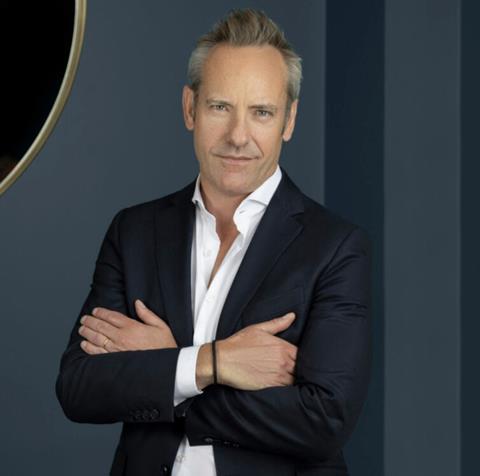Foakes talks in depth about Base’s cloud transformation project with Banijay Entertainment, one of biggest migrations of content ever seen in the industry

We have a three-step process that we do for everyone, whether you’re a small business or a massive group, which is firstly migrating to the cloud, then building a content hub and then transforming the workflows.
With Banijay Entertainment we’ve already started the first step, which is migrating petabytes and petabytes of data from all around the world into AWS.
We figure out all the clients’ needs, do all the design and bring in all the partners to facilitate the migration. We’ll then build and integrate all the software in the cloud using our platform, and we’ll host, manage and support the whole environment 24x7.
Banijay Entertainment has a long-standing relationship with AWS and we’re really building on top of that and supercharging it. They’ve got data spread all over the world in different formats and on different devices. Much of it is physical media and then a certain amount of it is already file-based and already digitised, so we can then more quickly map that into the cloud.
That piece of work alone is many, many months because it’s just huge volume. Volumetrically it’s one of the biggest migrations we’ve ever seen in the industry. Certainly, it’s the biggest one that we’ve ever done.
AWS is a great fit for this project because of the scale, because of their footprint and the fact they’re the biggest and most advanced public cloud provider. They’re also hugely specialist in media entertainment.
We always encourage customers to rationalise data before it goes into the cloud and work out what you need. Sometimes it’s hard to know because it’s not necessarily logged and tagged with all the necessary data, so there’s a lot of human work to get it done. But then once it’s in, you can start using it and monetising it.
We partner with best-in-class ingest partners around the world and they handle things like tape digitisation and physical device migrations. And we have specialist partners that can do drive repair and data retrievals from dodgy drives, if they are not completely gone.
Social monetisation
If you’re a media company and you want to get new revenue streams that are outside of linear broadcast, there’s so many ways you can you do it. You can push content to YouTube where you can get crazy numbers of hits and you get revenue through the various advertising and sponsorship associations with that. You can go straight to TikTok and X and all the different youth-focused platforms. And we’ve got clients who are pushing stuff now into gaming environments and metaverse and that’s actually one of the most exciting new areas. Gamification and blurring the lines between the gaming interactive environment and traditional broadcast shows is becoming a huge thing.
A lot of broadcasters who have maybe ignored social for years are now realising there’s tens of millions of revenues to be had. And, rather than have hundreds of staff on edit suites cutting away manually, with the new tools that are coming out you can programmatically do a lot of it. So, your margins go up and your speed goes up.
For Banijay Entertainment, the project is about new ways to monetise content, enabling them to extensively push out content on different social media platforms, creating content from stuff which has maybe been sat on drives and tapes for years and hasn’t really been fully leveraged yet.
They’re a huge global group of creatives so the tools we’re putting in place will help them make more content more quickly and work together more seamlessly and in less of a siloed way.
As part of the migration, there’s a huge work stream around securing the data hub and creating the metadata that goes with the content to make it useful using AI.
At the most basic level, it’s automated tagging, which most people ask us for now and there’s loads of models for that. There are also things like automated content curation and clipping, so you can more quickly find and publish stuff.
And then, we’ll all be looking at the developments in genAI and how that can change the way content is made and made more quickly. But that’s a later phase, because the technology is fairly embryonic at the moment.
We’ve advised all of our clients that if your data is not in the cloud and sorted and clean you can’t make use of all these amazing new tools and opportunities.
We keep getting asked the same thing over and over again, everywhere we go – how do I use all these new AI tools? Well, you’ve got to get your data sorted first, otherwise, it’s useless and you can’t plug it in.
AI and automation is just going to get cheaper and cheaper, higher volume, and the companies that embrace it and use it and imbue it into their workflows will be the ones that move faster and develop. The ones that ignore it will get left behind.

We’re looking at the portion of our revenue today on social media and it’s nowhere it should be – it’s roughly under 1% of the overall revenue of the company. This is partly because we’ve not really considered our job as a producer was to be in charge of content monetisation on social media – we were more relying on broadcasters and partners to do it.
We are building an entire operation on the cloud now, and we think that for a global company like ours the best way to face the economic and creative challenges we will be facing on supply chain is cloud and AI data, so we need to move faster on the cloud.
We are now testing different clipping tools where things should be at some point fully automated. We can ask a tool to clip 25 seasons of Survivor and deliver 10,000s of clips on social media in different kind of languages, in different translation tools.
We also need to move faster to fully cloud operations for post-production for many different reasons, including tools, performance, workflow sharing, productivity and creativity.
We have to start a discussion with the creatives as we don’t want technology or our approach to be frustrating for any of the creativity of our teams and of the group.
So, we are going to move extremely carefully. We are going to make sure that we are not interfering with the creative processes too much and that we will be respecting the DNA of the company.
It’s going to be a two or three years plan to get exactly where we want. We need to get a more consistent approach on how technology will shape the future of post-production and we have to be more consistent in the way we address that in each country and at the global level.





No comments yet